It wasn't that long ago that Wireless Waffle was discussing the need for spectrum for programme making and special events (PMSE). At the time we were considering how the needs of the burgeoning demand for radio spectrum for the Eurovision Song Contest would be met. Most radiomicrophones currently operate in the UHF television band, in the gaps between transmitters. These gaps (which are there to protect neighbouring television transmitters from interfering with each other) are also being eyed by the wireless broadband and machine-to-machine community amongst others and have been given the moniker 'white space' (though one person infinitely more learned in these things believes they should correctly be considered 'grey spaces' as they aren't as white as you might believe).
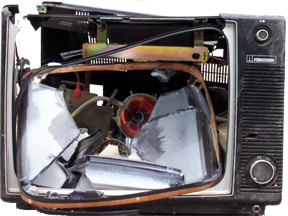 There are also moves afoot to squash television broadcasting into even less spectrum to make way for more mobile broadband. At present the spectrum from 470 to 790 MHz is generally available (40 channels - channels 21 to 60). The new plans involve using the spectrum from 694 MHz upwards for more mobile broadband leaving the terrestrial television broadcasters with just 28 channels (channels 21 to 48). And at the moment, there is no guarantee that there won't be further erosion of the UHF television band for other uses.
There are also moves afoot to squash television broadcasting into even less spectrum to make way for more mobile broadband. At present the spectrum from 470 to 790 MHz is generally available (40 channels - channels 21 to 60). The new plans involve using the spectrum from 694 MHz upwards for more mobile broadband leaving the terrestrial television broadcasters with just 28 channels (channels 21 to 48). And at the moment, there is no guarantee that there won't be further erosion of the UHF television band for other uses.
If TV use is squashed into less spectrum, there will be less 'grey space' available for radiomicrophones, or for anyone else for that matter. To make matters worse, the tuning range of most radiomicrophones (and similar devices) is very limited and each time they are forced to change frequency, new equipment needs to be bought. Of course, this is good news for manufacturers such as Sennheiser and Shure, but is bad news for the end users.
The need for spectrum for radiomicrophones and other PMSE uses is recognised at an European level in the Radio Spectrum Policy Programme (RSPP) article 8.5 of which states:
So what can be done? Are PMSE users to be left as the nomads of the radio spectrum, packing down their camps, wandering across the desert and re-assembling their tents in a new area every 3-4 years? Or is there a long(er)-term solution that would allow them to lay solid foundations and put down some bricks?
For many years, a band at 1785 - 1800 MHz has been available for wireless microphone use, but only for digital microphones (see CEPT Report 50). Almost no use has been made of the band and the views of Audio-Technica illustrate why this is the case:
 Using diversity reception (already commonplace in radiomicrophone equipment) and careful antenna placement, there is no reason why the 1.8 GHz band could not prove useful. But one of the other problems with this band is that radiomicrophones are not well suited to using digital technology. To send audio digitally, it must first be converted from analogue to digital. For 'high quality' audio, this would yield a 'raw' data rate of at least 512 kbps, if not more - and more like 1 Mbps by the time error correction is added in. If we were to try to transmit this data in the 200 kHz channels that microphones currently use, we would have to use a high-order modulation scheme (such as 8-PSK or 16 QAM) and this causes problems because:
Using diversity reception (already commonplace in radiomicrophone equipment) and careful antenna placement, there is no reason why the 1.8 GHz band could not prove useful. But one of the other problems with this band is that radiomicrophones are not well suited to using digital technology. To send audio digitally, it must first be converted from analogue to digital. For 'high quality' audio, this would yield a 'raw' data rate of at least 512 kbps, if not more - and more like 1 Mbps by the time error correction is added in. If we were to try to transmit this data in the 200 kHz channels that microphones currently use, we would have to use a high-order modulation scheme (such as 8-PSK or 16 QAM) and this causes problems because:
This means that the other way in which digital systems use spectrum efficiently is also a no-go. Compressing the data (e.g. using a compressed audio format such as mp3 instead of the raw digitised audio) also takes time - generally longer than the time taken to transmit the signal digitally. And so we reach an impasse: compressing the audio to use less spectrum takes too long, and transmitting the raw data uses more spectrum than their analogue counterpart and involves a number of other trade-offs. All this means that digital radiomicrophones, whilst slowly being developed, tend to offer no better performance than analogue versions (and at much higher cost).
But the fact is, that if the radiomicrophone industry does not make some strides towards adopting higher frequencies or more spectrum efficient modulation techniques, it might find itself without enough spectrum in which to operate.
So where could microphones go? There are a whole host of frequencies which are currently assigned at a European level by CEPT for radiomicrophone use (as per ERC Recommendation 70-03, Annex 10). These include:
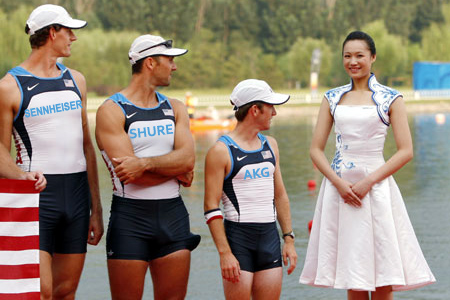
 There are also moves afoot to squash television broadcasting into even less spectrum to make way for more mobile broadband. At present the spectrum from 470 to 790 MHz is generally available (40 channels - channels 21 to 60). The new plans involve using the spectrum from 694 MHz upwards for more mobile broadband leaving the terrestrial television broadcasters with just 28 channels (channels 21 to 48). And at the moment, there is no guarantee that there won't be further erosion of the UHF television band for other uses.
There are also moves afoot to squash television broadcasting into even less spectrum to make way for more mobile broadband. At present the spectrum from 470 to 790 MHz is generally available (40 channels - channels 21 to 60). The new plans involve using the spectrum from 694 MHz upwards for more mobile broadband leaving the terrestrial television broadcasters with just 28 channels (channels 21 to 48). And at the moment, there is no guarantee that there won't be further erosion of the UHF television band for other uses.If TV use is squashed into less spectrum, there will be less 'grey space' available for radiomicrophones, or for anyone else for that matter. To make matters worse, the tuning range of most radiomicrophones (and similar devices) is very limited and each time they are forced to change frequency, new equipment needs to be bought. Of course, this is good news for manufacturers such as Sennheiser and Shure, but is bad news for the end users.
The need for spectrum for radiomicrophones and other PMSE uses is recognised at an European level in the Radio Spectrum Policy Programme (RSPP) article 8.5 of which states:
Member States shall, in cooperation with the Commission, seek to ensure the necessary frequency bands for PMSE, in accordance with the Union's objectives to improve the integration of internal market and access to culture.
So what can be done? Are PMSE users to be left as the nomads of the radio spectrum, packing down their camps, wandering across the desert and re-assembling their tents in a new area every 3-4 years? Or is there a long(er)-term solution that would allow them to lay solid foundations and put down some bricks?
For many years, a band at 1785 - 1800 MHz has been available for wireless microphone use, but only for digital microphones (see CEPT Report 50). Almost no use has been made of the band and the views of Audio-Technica illustrate why this is the case:
The frequency range [1800 MHz] is not really suited for wireless microphones, as the higher frequencies (i.e. shorter wavelengths) create more body absorption and shadow effects due to the directivity, etc. The use of these frequencies will only work adequately when there is a line of sight and a short distance between the transmitter and the receiver.
 Using diversity reception (already commonplace in radiomicrophone equipment) and careful antenna placement, there is no reason why the 1.8 GHz band could not prove useful. But one of the other problems with this band is that radiomicrophones are not well suited to using digital technology. To send audio digitally, it must first be converted from analogue to digital. For 'high quality' audio, this would yield a 'raw' data rate of at least 512 kbps, if not more - and more like 1 Mbps by the time error correction is added in. If we were to try to transmit this data in the 200 kHz channels that microphones currently use, we would have to use a high-order modulation scheme (such as 8-PSK or 16 QAM) and this causes problems because:
Using diversity reception (already commonplace in radiomicrophone equipment) and careful antenna placement, there is no reason why the 1.8 GHz band could not prove useful. But one of the other problems with this band is that radiomicrophones are not well suited to using digital technology. To send audio digitally, it must first be converted from analogue to digital. For 'high quality' audio, this would yield a 'raw' data rate of at least 512 kbps, if not more - and more like 1 Mbps by the time error correction is added in. If we were to try to transmit this data in the 200 kHz channels that microphones currently use, we would have to use a high-order modulation scheme (such as 8-PSK or 16 QAM) and this causes problems because:- transmitters need to be linear meaning they draw more power and would drain batteries much more quickly;
- higher-order modulation schemes require decent signal-to-noise levels and thus higher powered transmitters;
- it takes time to encode and decode complex modulation schemes.
This means that the other way in which digital systems use spectrum efficiently is also a no-go. Compressing the data (e.g. using a compressed audio format such as mp3 instead of the raw digitised audio) also takes time - generally longer than the time taken to transmit the signal digitally. And so we reach an impasse: compressing the audio to use less spectrum takes too long, and transmitting the raw data uses more spectrum than their analogue counterpart and involves a number of other trade-offs. All this means that digital radiomicrophones, whilst slowly being developed, tend to offer no better performance than analogue versions (and at much higher cost).
But the fact is, that if the radiomicrophone industry does not make some strides towards adopting higher frequencies or more spectrum efficient modulation techniques, it might find itself without enough spectrum in which to operate.
So where could microphones go? There are a whole host of frequencies which are currently assigned at a European level by CEPT for radiomicrophone use (as per ERC Recommendation 70-03, Annex 10). These include:
- 29.7 - 47 MHz - manufacturers claim that these frequencies are not ideal as they are too noisy and antennas are too large (fussy lot aren't they)
- 174 - 216 MHz - VHF band III - mostly occupied by TV broadcasting and DAB radio
- 470 - 790 MHz - the aforementioned UHF band that is now being squeezed
- 863 - 865 MHz - licence exempt and shared with other devices
- 1785 - 1805 MHz - 'too high'
- 1215 - 1350 MHz - mostly an aeronautical radar band but shared with many other uses and therefore presumably sharable with others
- 1350 - 1400 MHz - low capacity fixed links and some mobile services
- 1492 - 1518 MHz - more low capacity fixed links - and already proposed in ERC 70-03 but available in a tiny amount in the UK only
- 1675 - 1710 MHz - a downlink band for meteorological satellites but not heavily used - sterilisation zones around official downlink sites would protect professional users

2 comments
( 4621 views )
| permalink
| 



 ( 2.7 / 1734 )
( 2.7 / 1734 )




 ( 2.7 / 1734 )
( 2.7 / 1734 )
Monday 2 December, 2013, 22:04 - Pirate/Clandestine
Posted by Administrator
With thanks to Keith over at the other Wireless Waffle for bringing this to our attention. Pirate Wogan has to be one of the best pieces of radio broadcasting since Chris Morris's various shows on BBC Radio London and Radio 1. Invented by Peter Serafinowicz the concept is a simple one. Put Terry Wogan (or T-Wog$ as he is now to be known) in front of a microphone on a fictitious pirate radio station and record the ensuing mayhem.Posted by Administrator
Not only is the result hilarious (up there with '10 things to change the world' - which you can hear on the Cook'd and Bomb'd web-site) but it's available in app format too!
 The Pirate Wogan app allows you to loop various drum and bass sounds together with samples of T-Wog$ to produce your very own London pirate sound-alike. In principal you should get bored in no time, but there is something hypnotic about the combination of T-Wog$ dulcet tones and the deep dark bass throb of the music.
The Pirate Wogan app allows you to loop various drum and bass sounds together with samples of T-Wog$ to produce your very own London pirate sound-alike. In principal you should get bored in no time, but there is something hypnotic about the combination of T-Wog$ dulcet tones and the deep dark bass throb of the music. Big up the Wireless massive. Easy now.
Thursday 4 April, 2013, 22:05 - Licensed, Spectrum Management, Chart Predictions
Posted by Administrator
Posted by Administrator
 It is now only a month or so before the annual pan-European musical bun fight that is the Eurovision Song Contest (which is on the 18th of May). The 39 songs that have made it to the competition (which this year is in Malmo, Sweden) are now available to listen to online - with many having professionally produced videos viewable on YouTube. As always there is a mix of complete Euro-nonsense (Greece with their song Alcohol Is Free), songs that could have been written for Eurovision any time from 1960 to the present day (Switzerland's song You And Me falls into this category) copies of last year's winner in the hope that people will want the same thing again this year (Germany's Glorious for example), sickly pop songs with no real substance (Finland's Abbaesque entry Marry Me) and this year, it seems, a whole swathe of rather nice ballads.
It is now only a month or so before the annual pan-European musical bun fight that is the Eurovision Song Contest (which is on the 18th of May). The 39 songs that have made it to the competition (which this year is in Malmo, Sweden) are now available to listen to online - with many having professionally produced videos viewable on YouTube. As always there is a mix of complete Euro-nonsense (Greece with their song Alcohol Is Free), songs that could have been written for Eurovision any time from 1960 to the present day (Switzerland's song You And Me falls into this category) copies of last year's winner in the hope that people will want the same thing again this year (Germany's Glorious for example), sickly pop songs with no real substance (Finland's Abbaesque entry Marry Me) and this year, it seems, a whole swathe of rather nice ballads. For what it's worth, Wireless Waffle is particularly fond of the Icelandic entry (Ég á Líf), the video for which awaits your enjoyment below. If you are of an emotionally sensitive disposition, make sure you have some tissues to hand.
Our selection of songs that ought to be in the top 5, at least if they are able to reproduce the performance in their videos on stage on the night are:
- Eyþór Ingi Gunnlaugsson - Ég á Líf (Iceland)
- Roberto Bellarosa - Love Kills (Belgium)
- Zlata Ognevich - Gravity (Ukraine)
- Despina Olympiou - An Me Thimáse (Cyprus)
- Dina Garipova - What If (Russia)
What has become more complex, though, is the use of wireless technology for the event. Whilst it's still normal in a concert hall to use wired cameras, the use of radiomicrophones and in-ear monitors (which allow the performer to hear themselves sing without the noise of the surrounding environment) has grown significantly over recent years. Figures provided in response to a European Commission consultation on programme making spectrum show an average annual growth of 12% in the number of such devices employed over the past 15 years (but nearly 40% growth per year over the last 4 years).
| Year | Venue | Radiomicrophones used | In-Ear Monitors used |
|---|---|---|---|
| 1998 | Birmingham, UK | 40 | 2 |
| 1999 | Jerusalem, Israel | 42 | 6 |
| 2000 | Stockholm, Sweden | 48 | 16 |
| 2001 | Copenhagen, Denmark | 48 | 16 |
| 2002 | Tallinn, Estonia | 54 | 16 |
| 2003 | Riga, Latvia | 54 | 16 |
| 2004 | Istanbul, Turkey | 54 | 16 |
| 2005 | Kiev, Ukraine | 54 | 16 |
| 2006 | Athens, Greece | 54 | 16 |
| 2007 | Helsinki, Finland | 56 | 16 |
| 2008 | Belgrade, Serbia | 56 | 16 |
| 2009 | Moscow, Russia | 56 | 16 |
| 2010 | Oslo, Norway | 72 | 32 |
| 2011 | Düsseldorf, Germany | 82 | 40 |
| 2012 | Baku, Azerbaijan | 104 | 80 |
What is driving this growth? One the one hand, the equipment costs are coming down making it more affordable to use wireless microphones. On the other, it's also probably true that in earlier years, microphones would be passed from one user to another as they went on/off stage whereas now each artist and band has their own set of equipment which is tailored to their own needs.
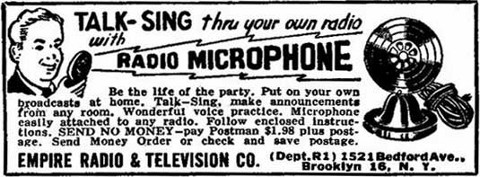
Equipment is one thing, but what about the radio spectrum issues? Radiomicrophones and in-ear monitors are normally analogue (for reasons that can wait for another day) and use around 200 kHz of spectrum each. If all the devices in Baku (184) were turned on at the same time, they would need 37 MHz of spectrum just to exist. But this is not the full story. Firstly, if devices were 200 kHz apart, there would be not a sliver of a gap between them. Whilst they could all successfully transmit, even the smartest digital receivers would find it difficult to separate them from each other - and we aren't dealing with digital technology. In reality, frequencies are separated by at least 300 kHz and often more to allow the receivers room to breathe.
The situation is even worse than this however. Due to the close proximity of devices to each other, and of devices to receivers, there is a tendency for lots of intermodulation to occur. If you assume that each 200 kHz channel that can be used is numbered, starting at 1 then you can't use the adjacent channel because it's too close. You also, because of intermodulation, can't use any channel which represents the difference or sum of twice the value of one channel being used minus another channel being used. As and example:
- If you are using channels 1 and 3 (channel 2 is adjacent to channel 1, so you can't use that), you can't use channel 4 (as its adjacent to 3) or channel 5 (as its 2*3-1). The next available channel is 6.
- If you are using channels 1, 3 and 6, you now also can't use channel 7 (adj to 6). The next available channel is 8.
- If you are using channels 1, 3, 6 and 8 you now can't use channels 9 (adj to 8), 10 (2*8-6) or 11 (2*6-1). The next available channel is 12.
The diagram below shows the situation. Green channels are those in use. Red channels are adjacent channels that can't be used. Purple channels are intermodulation products. Pink channels are both at the same time!
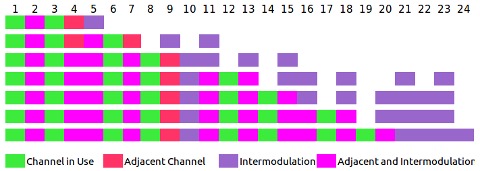
In the example given above, out of 24 available channels, only 8 are useable. Actually, if you extended the diagram at this point you would find that another 10 channels are already 'wallied out' because of intermodulation. So 8 transmitters has used 34 frequencies! The relationship between the number of transmitters on-air and the number of channels sterilised is not linear but in general something of the order of 1 frequency in 5 can be used for radiomicrophones where they are packed densely in a given location if these problems are to be avoided.
This represents pretty poor frequency efficiency but is fairly representative of what is achieved in real life, which is that only something like one fifth of any spectrum available for radiomicrophones or in-ear monitors can be used in any one venue at the same time. Returning to Baku then, the amount of spectrum required is not 37 MHz, but to support 184 devices simultaneously would require more like 184 MHz of spectrum: give or take 1 MHz per device!
Most radiomicrophones (and in-ear monitors) operate in and amongst television broadcasts in the UHF band which notionally runs from 470 to 862 MHz. In many countries, however, the upper end of this band from 790 MHz upwards has now been set-aside for mobile broadband services, leaving 320 MHz remaining for television broadcasting (and of course radio microphones).
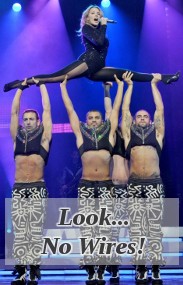 Azerbaijan, last year's host of the Eurovision, is yet to switch over to digital TV and equally has not yet used the upper part of the UHF TV band for mobile services and so finding 180 MHz of spectrum for radiomicrophones is presumably not that difficult. In 2013, however, the contest is in Malmo, Sweden. Not only has Sweden cleared the upper part of the UHF band for mobile services, but it has also gone over to digital broadcasting. Malmo is virtually on the border between Sweden and Denmark meaning that the local TV spectrum will be occupied not only by the 8 Swedish multiplexes but by the Danish ones too. Finding 180 MHz of spectrum for this year's competition is therefore much more challenging.
Azerbaijan, last year's host of the Eurovision, is yet to switch over to digital TV and equally has not yet used the upper part of the UHF TV band for mobile services and so finding 180 MHz of spectrum for radiomicrophones is presumably not that difficult. In 2013, however, the contest is in Malmo, Sweden. Not only has Sweden cleared the upper part of the UHF band for mobile services, but it has also gone over to digital broadcasting. Malmo is virtually on the border between Sweden and Denmark meaning that the local TV spectrum will be occupied not only by the 8 Swedish multiplexes but by the Danish ones too. Finding 180 MHz of spectrum for this year's competition is therefore much more challenging.But move forward 10 years and then what will happen. For starters, at the current rate of growth, and assuming no improvement in the spectrum efficiency of wireless microphone technology, there will be a requirement for 560 MHz of spectrum for the Eurovision. Secondly, the parts of the UHF TV band currently unoccupied and used for these purposes will be full of 'cognitive radio' devices hunting out every last vestige of unused spectrum. What will happen then? The simple fact is that no-one really knows, but the programme making community are worried, and understandably so. If there was a way around the intermodulation problem, then the amount of spectrum required would decrease, so perhaps now is the time for some enterprising RF engineer to find a solution to this problem so that we can continue to enjoy the pageantry of the world's greatest song contest. Either that or sing less? Some would argue that for the Eurovision that would be no bad thing.
Previous posts entitled 'What are the chances?' have mostly been about the chances of pirate 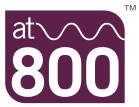 radio stations causing enough interference to merit the authorities tracking them down. In a sense, there is a certain similarity between that topic and the one discussed here as the question that's being explored today is 'What are the chances... of receiving interference from 4G networks at 800 MHz if you are a UK DTT viewer?' Rather a long title, but as of this week, an organisation called Digital Mobile Spectrum Limited (DMSL) who are badging themselves as at800 have been given £180 million specifically to try and answer exactly that question.
radio stations causing enough interference to merit the authorities tracking them down. In a sense, there is a certain similarity between that topic and the one discussed here as the question that's being explored today is 'What are the chances... of receiving interference from 4G networks at 800 MHz if you are a UK DTT viewer?' Rather a long title, but as of this week, an organisation called Digital Mobile Spectrum Limited (DMSL) who are badging themselves as at800 have been given £180 million specifically to try and answer exactly that question.
So what is the problem exactly? The UK has just auctioned spectrum which is colloquially known as the 'Digital Dividend'. This radio spectrum was previously used for television broadcasting, representing channels 61 to 69 inclusive (790 to 862 MHz). Many people have antennas and receivers that were receiving television pictures on those channels until very recently. As of now, these frequencies are going to be used for 4G mobile services. Once these services are on-air, there will be mobile base stations transmitting on frequencies which it is possible for set-top boxes and digital televisions to receive - though as mobile and television technologies are different, they won't receive pictures, just the signals (a bit like listening to a conversation in a foreign language - you can hear it but you can't decipher it).
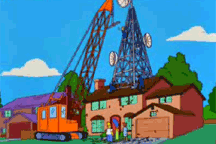 Under certain circumstances, it is possible that the 4G transmissions could cause interference to television (Freeview) reception. The circumstances are complex but generally if television transmissions on channel 59 or 60 are being used in a particular area, the receivers will be more susceptible to interference. If those receivers are close to a mobile base station transmitting at the lower end of the new 800 MHz mobile band, then interference could be caused (mobile operator 'three' have the frequencies at the bottom of the band most likely to cause a problem). Calculating who will be affected is therefore rather complex - it is a combination of which television transmitter they are watching, how far away from it they are, and how close to a three base station they are. Thus it is not straightforward to identify whose viewing might be disrupted.
Under certain circumstances, it is possible that the 4G transmissions could cause interference to television (Freeview) reception. The circumstances are complex but generally if television transmissions on channel 59 or 60 are being used in a particular area, the receivers will be more susceptible to interference. If those receivers are close to a mobile base station transmitting at the lower end of the new 800 MHz mobile band, then interference could be caused (mobile operator 'three' have the frequencies at the bottom of the band most likely to cause a problem). Calculating who will be affected is therefore rather complex - it is a combination of which television transmitter they are watching, how far away from it they are, and how close to a three base station they are. Thus it is not straightforward to identify whose viewing might be disrupted.
All is not lost though, as there is a way to solve the interference. The solution to the problem is to fit a filter which allows the television transmissions through but blocks the 4G signals. at800 have been given the money to help work out who will be affected and to pay for filters to be fitted. It has been estimated that up to almost 1 million UK television households could be affected. The key here is 'could be...' because experience in other countries where 800 MHz services have already been launched is that they have not led to the degree of interference problems that are predicted.
There is no doubt that some households will be affected, but the numbers could be well below 1 million. Those which are most susceptible are those which are in areas where television signals are already weak. In some of those areas, viewers will have fitted amplifiers to their TV antennas to boost the signal. These amplifiers are particularly susceptible to interference and can even be completely overloaded by strong 4G transmitters. Similar amplifiers are also used to distribute signals from a TV antenna to multiple television sockets. Some houses with multiple sockets may have an amplifier fitted and not even be aware of it. In blocks of flats the same idea applies. These situations will make fitting a filter more complex, but still feasible.
In some (rare) cases, it is possible that no amount of filtering will solve the problem. In these circumstances at800 has the power, and the money, to replace the terrestrial television system with an alternative such as cable or satellite.
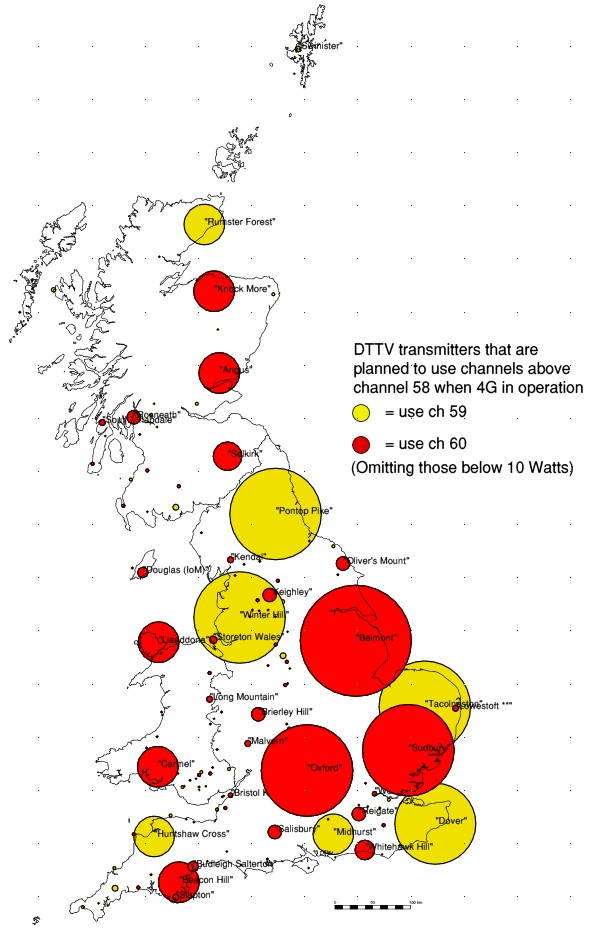 Should you be worried? Firstly, you need to understand whether the television transmitter in your area uses channels 59 or 60. The map on the right (click for a larger version) shows those television transmitter which will use these channels. If you are served by one of these transmitters then that puts you at a higher risk. If you are towards the edge of the coverage area then your risk is increased. If you are near a three base station your risk is further increased (sadly there is no simple way to determine this). If you are affected, what will you see? In a word... nothing! Your reception of any programmes transmitted on the frequencies represented by channels 59 or 60 will stop, dead. Alternatively, the picture might break up badly.
Should you be worried? Firstly, you need to understand whether the television transmitter in your area uses channels 59 or 60. The map on the right (click for a larger version) shows those television transmitter which will use these channels. If you are served by one of these transmitters then that puts you at a higher risk. If you are towards the edge of the coverage area then your risk is increased. If you are near a three base station your risk is further increased (sadly there is no simple way to determine this). If you are affected, what will you see? In a word... nothing! Your reception of any programmes transmitted on the frequencies represented by channels 59 or 60 will stop, dead. Alternatively, the picture might break up badly.
Unfortunately, losing reception or having bad reception is not necessarily evidence of interference from 4G base stations. It could be caused by a myriad of other problems. This is what makes the job of at800 that much more difficult. They will need to decide, when confronted with an apparent case of interference, whether 4G is the cause or whether it is something else. Their decisions on this will no doubt prove controversial!
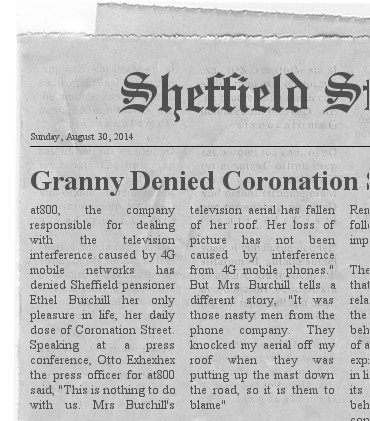
If you use satellite (Sky or Freesat) or cable then you don't need to worry. If you use Freeview, then perhaps now would be a good time to check your reception, at least then you will know whether anything changes.
 radio stations causing enough interference to merit the authorities tracking them down. In a sense, there is a certain similarity between that topic and the one discussed here as the question that's being explored today is 'What are the chances... of receiving interference from 4G networks at 800 MHz if you are a UK DTT viewer?' Rather a long title, but as of this week, an organisation called Digital Mobile Spectrum Limited (DMSL) who are badging themselves as at800 have been given £180 million specifically to try and answer exactly that question.
radio stations causing enough interference to merit the authorities tracking them down. In a sense, there is a certain similarity between that topic and the one discussed here as the question that's being explored today is 'What are the chances... of receiving interference from 4G networks at 800 MHz if you are a UK DTT viewer?' Rather a long title, but as of this week, an organisation called Digital Mobile Spectrum Limited (DMSL) who are badging themselves as at800 have been given £180 million specifically to try and answer exactly that question.So what is the problem exactly? The UK has just auctioned spectrum which is colloquially known as the 'Digital Dividend'. This radio spectrum was previously used for television broadcasting, representing channels 61 to 69 inclusive (790 to 862 MHz). Many people have antennas and receivers that were receiving television pictures on those channels until very recently. As of now, these frequencies are going to be used for 4G mobile services. Once these services are on-air, there will be mobile base stations transmitting on frequencies which it is possible for set-top boxes and digital televisions to receive - though as mobile and television technologies are different, they won't receive pictures, just the signals (a bit like listening to a conversation in a foreign language - you can hear it but you can't decipher it).
 Under certain circumstances, it is possible that the 4G transmissions could cause interference to television (Freeview) reception. The circumstances are complex but generally if television transmissions on channel 59 or 60 are being used in a particular area, the receivers will be more susceptible to interference. If those receivers are close to a mobile base station transmitting at the lower end of the new 800 MHz mobile band, then interference could be caused (mobile operator 'three' have the frequencies at the bottom of the band most likely to cause a problem). Calculating who will be affected is therefore rather complex - it is a combination of which television transmitter they are watching, how far away from it they are, and how close to a three base station they are. Thus it is not straightforward to identify whose viewing might be disrupted.
Under certain circumstances, it is possible that the 4G transmissions could cause interference to television (Freeview) reception. The circumstances are complex but generally if television transmissions on channel 59 or 60 are being used in a particular area, the receivers will be more susceptible to interference. If those receivers are close to a mobile base station transmitting at the lower end of the new 800 MHz mobile band, then interference could be caused (mobile operator 'three' have the frequencies at the bottom of the band most likely to cause a problem). Calculating who will be affected is therefore rather complex - it is a combination of which television transmitter they are watching, how far away from it they are, and how close to a three base station they are. Thus it is not straightforward to identify whose viewing might be disrupted. All is not lost though, as there is a way to solve the interference. The solution to the problem is to fit a filter which allows the television transmissions through but blocks the 4G signals. at800 have been given the money to help work out who will be affected and to pay for filters to be fitted. It has been estimated that up to almost 1 million UK television households could be affected. The key here is 'could be...' because experience in other countries where 800 MHz services have already been launched is that they have not led to the degree of interference problems that are predicted.
There is no doubt that some households will be affected, but the numbers could be well below 1 million. Those which are most susceptible are those which are in areas where television signals are already weak. In some of those areas, viewers will have fitted amplifiers to their TV antennas to boost the signal. These amplifiers are particularly susceptible to interference and can even be completely overloaded by strong 4G transmitters. Similar amplifiers are also used to distribute signals from a TV antenna to multiple television sockets. Some houses with multiple sockets may have an amplifier fitted and not even be aware of it. In blocks of flats the same idea applies. These situations will make fitting a filter more complex, but still feasible.
In some (rare) cases, it is possible that no amount of filtering will solve the problem. In these circumstances at800 has the power, and the money, to replace the terrestrial television system with an alternative such as cable or satellite.
 Should you be worried? Firstly, you need to understand whether the television transmitter in your area uses channels 59 or 60. The map on the right (click for a larger version) shows those television transmitter which will use these channels. If you are served by one of these transmitters then that puts you at a higher risk. If you are towards the edge of the coverage area then your risk is increased. If you are near a three base station your risk is further increased (sadly there is no simple way to determine this). If you are affected, what will you see? In a word... nothing! Your reception of any programmes transmitted on the frequencies represented by channels 59 or 60 will stop, dead. Alternatively, the picture might break up badly.
Should you be worried? Firstly, you need to understand whether the television transmitter in your area uses channels 59 or 60. The map on the right (click for a larger version) shows those television transmitter which will use these channels. If you are served by one of these transmitters then that puts you at a higher risk. If you are towards the edge of the coverage area then your risk is increased. If you are near a three base station your risk is further increased (sadly there is no simple way to determine this). If you are affected, what will you see? In a word... nothing! Your reception of any programmes transmitted on the frequencies represented by channels 59 or 60 will stop, dead. Alternatively, the picture might break up badly.Unfortunately, losing reception or having bad reception is not necessarily evidence of interference from 4G base stations. It could be caused by a myriad of other problems. This is what makes the job of at800 that much more difficult. They will need to decide, when confronted with an apparent case of interference, whether 4G is the cause or whether it is something else. Their decisions on this will no doubt prove controversial!

If you use satellite (Sky or Freesat) or cable then you don't need to worry. If you use Freeview, then perhaps now would be a good time to check your reception, at least then you will know whether anything changes.

